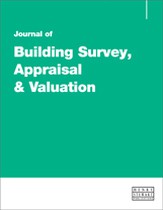Processing of high-definition scan data for use within building conservation practice
Abstract
High-definition scanning of buildings and streets has become an increasingly common, if expensive, procedure followed within building conservation and building surveying. The available technology provides a mechanism through which extremely accurate three-dimensional data points can be rapidly collected, with a view towards the data holding potential use within modelling, design and long-term monitoring work. This is of particular relevance within the study of built cultural heritage, where interventions and activities ranging across material protection, archival research and alteration works will require detailed and reliable records of the existing built fabric. A question arises as to how large three-dimensional data can make a valuable contribution towards such recording and modelling processes. This stems from associated questions of how to deal with very large data sets in such a way that benefits can be drawn from the complexity of the dataset, without unduly hampering progress or losing accuracy. This paper considers the usefulness of the 3D data cloud, including a comparison with manual data collection. The paper concludes with a discussion regarding post-processing of data, and usefulness within building survey datasets and procedures.
The full article is available to subscribers to the journal.
Citation
Mantle, Emmajane and Laing, Richard (2012, December 1). Processing of high-definition scan data for use within building conservation practice. In the Journal of Building Survey, Appraisal & Valuation, Volume 1, Issue 4. https://doi.org/10.69554/ZPOI5077.Publications LLP
